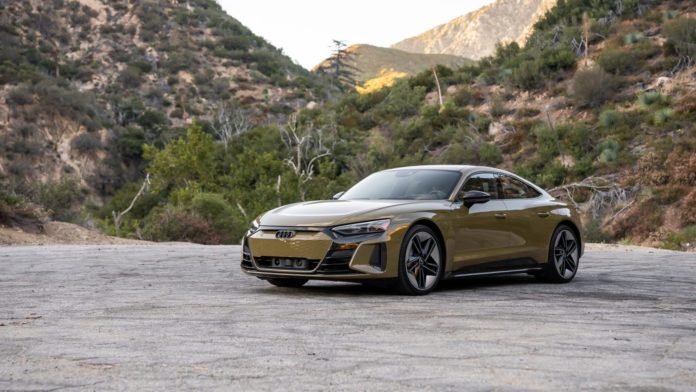It’s been almost three years since Audi unveiled the RS e-tron GT in early 2021, and the arena it competes in looks quite different than it did 36 months ago. As the auto industry continues its pivot toward electric vehicles, the RS’ list of competitors grows yearly. Whereas it previously only really had to worry about fending off its mechanical sibling, the Porsche Taycan, the range-topping e-tron now has to fight off threats from the Lucid Air Grand Touring, Tesla Model S Plaid, and the Mercedes-AMG EQS Sedan.
Despite the encroaching competition, all of the characteristics that made Audi’s flagship a compelling machine in the first place are relevant today. It’s still just about the best-looking EV on sale with its flowing and curvy but elegant styling. And thanks to its Porsche bones, it handles far better than anything weighing over 5,100 pounds has any right to. However, its competitors haven’t exactly sat idle.
Starting at $145,395, including destination, the RS is now the slowest of its direct rivals to 60 mph and covers the least miles on a charge. Three years on, are the e-tron’s killer looks and exciting driving experience enough to compete with the industry’s best?
Despite sharing major structural and powertrain components with the Porsche Taycan due to a joint development project between the two brands, the Audi RS e-tron GT has always been the more visually exciting pick of the pair. In contrast to the Porsche’s smooth, uncluttered, and relatively minimalist styling, the Audi employs body lines to accentuate the flare of its front and rear fenders. These connect with a massive LED light bar out back, which, combined, work to visually widen the car.
This theme continues upfront with the e-tron’s headlights, which push out to the edges of the RS’ front fascia, leaving room for a prominent body-colored grille and making this sedan’s front appear broader than its dimensions would suggest. The result is a car that offers a sportier and all-around more interesting aesthetic despite sharing proportions similar to its Taycan sibling.

An aesthetic made it all the more appealing with available colors like my tester’s Tactical Green Metallic, which perfectly matches its Santos Brown leather interior. While I’m aware not everyone will be as fond of this subtle shade as I am, it’s always a welcomed sight when carmakers expand a car’s available palette beyond the standard range of silvers.
Looks aside, the RS e-tron GT’s greatest strength is just how well it drives. While the standard e-tron GT develops 469 horsepower from two electric motors, stepping up to the range-topping RS pumps that figure up to 590 hp and temporarily up to 637 hp with Boost Mode engaged. Flat out, Audi’s flagship EV will hit 60 mph in as little as 3.1 seconds and top out at 155 mph.
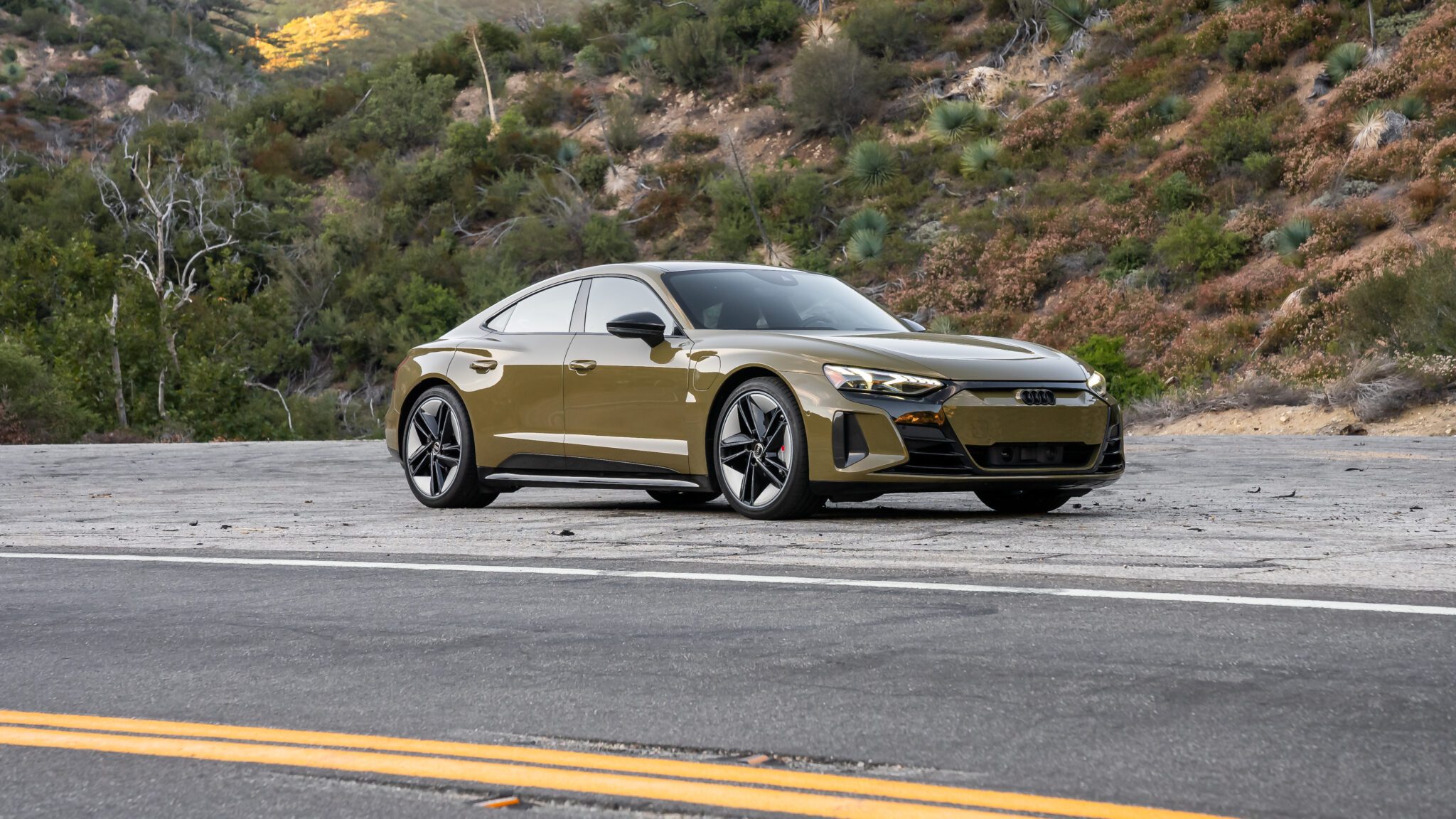
While these stats allow the RS to feel outstandingly fast in just about any scenario, practically all its direct competitors are still quicker. The 1,050-hp Lucid Air Grand Touring Performance completes the run to 60 mph in 2.6 seconds, matching the 616-hp Porsche Taycan Turbo’s time, while the 1,020-hp Tesla Model S Plaid takes 1.99 seconds. Only the Mercedes-AMG EQS Sedan falls behind in the segment with its claimed 3.4-second figure.
This may come as a shock, but these stats only tell half the story. Of the aforementioned group, only the Porsche and Audi employ a two-speed transmission to send power to their four wheels. The Lucid, Tesla, and Mercedes-AMG all use similar single-speed units that allow them to blast off the line quickly but lose ferocity as the speedo climbs. In contrast, the RS’s two-speed unit enables it to accelerate aggressively even if it’s already cruising at highway speeds, making the performance you feel in the real world comparable to even the rivals that severely outgun it.
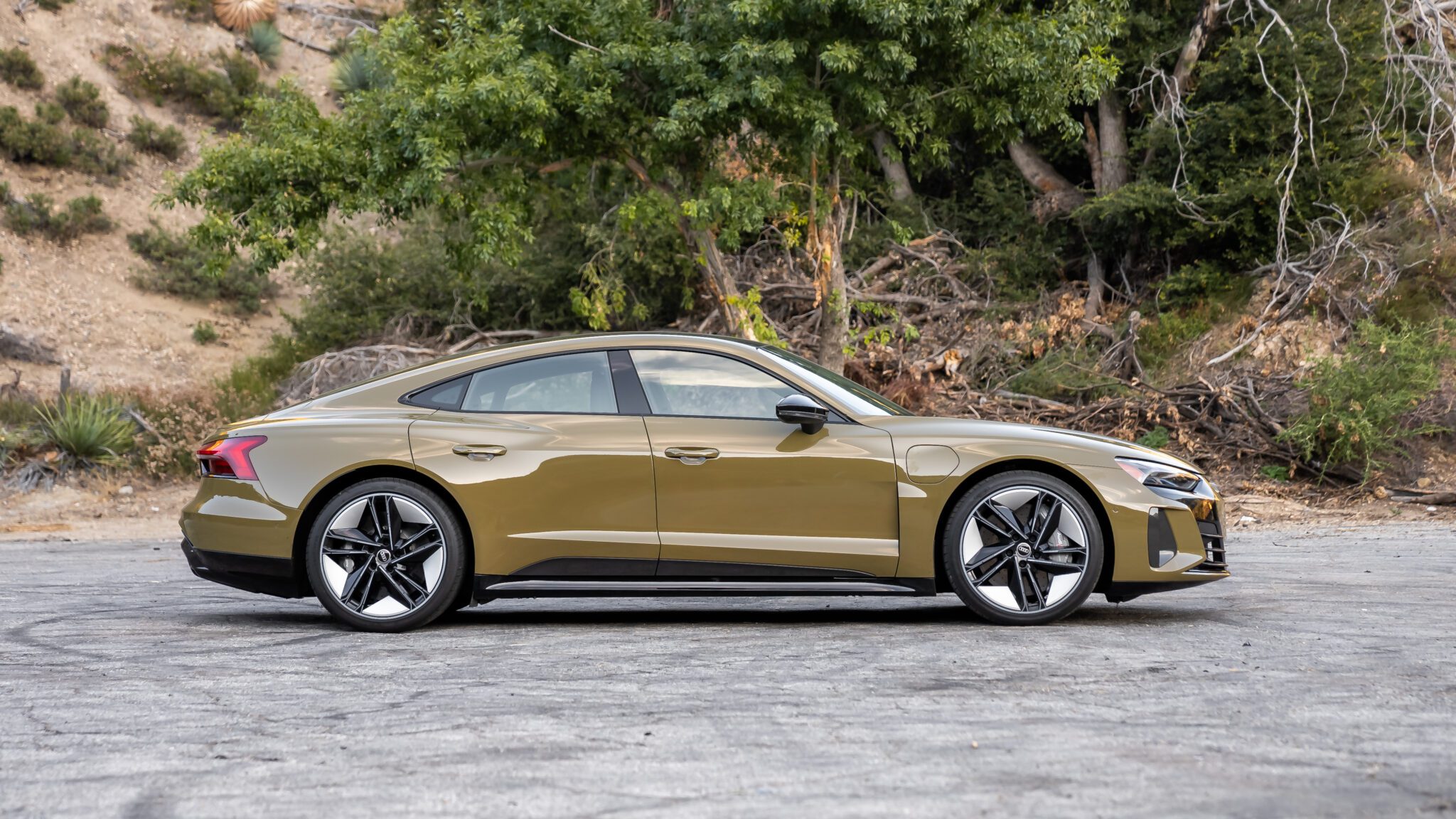
Instead, the e-tron’s handling sets it apart from the pack. Despite Porsche ties, the GT is more than just a re-styled Taycan. It may employ the same overall structure as its mechanical sibling. Still, it rides on an adaptive air suspension system, which Audi configures to be more compliant than the Porche’s unit, making the e-tron a more comfortable daily driver. True to its name, these tuning choices allow the RS to have its own identity, being less of a high-performance sedan like the Taycan and more of an athletic grand tourer.
While its shocks may strive to offer a plush driving experience, there’s no denying the RS e-tron GT’s sporty intentions. Point its nose towards a twisty back road, and you’re rewarded with a 5,100-lb sedan that still grips, turns, and stops like a supercar. And while it may not be as stiff as a comparable Taycan Turbo, it remains nicely balanced as you come into a tighter bend, only to confidently put all of its power down on the way out. My tester wore an optional $7,100 set of carbon ceramic brakes, which, although pricey, kept this hefty sedan in check through back-to-back runs up a canyon road without any loss in performance.
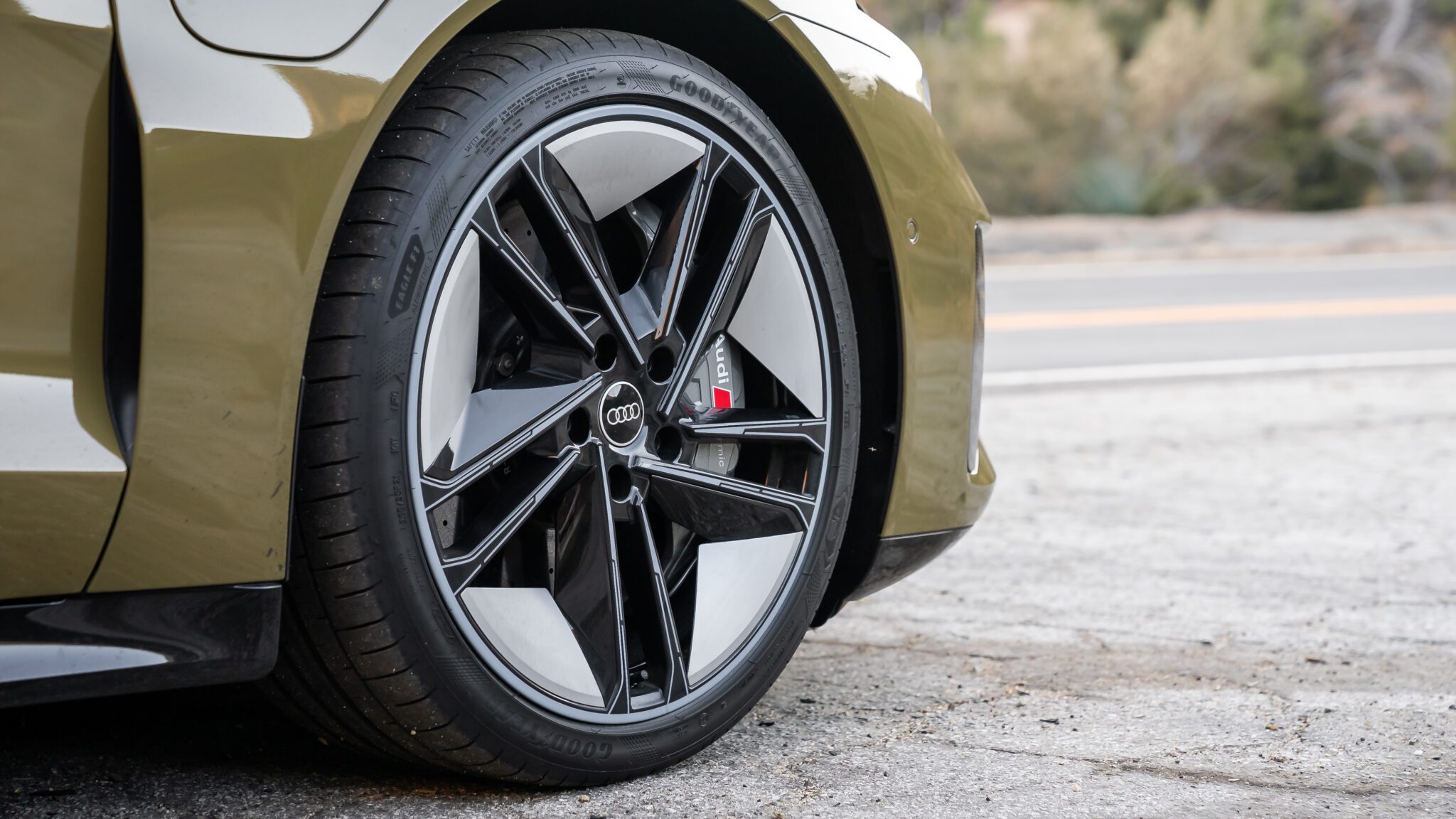
There’s only one concern when hustling the RS e-tron GT up a nice piece of road: its range. With electricity coming from a 93.4 kilowatt-hour battery pack, the EPA estimates its range to be 238 miles, ranking it behind most direct competitors. For context, Lucid’s estimate is 446 miles, while the Tesla and Mercedes-AMG offer 396 and 277 miles, respectively. The e-tron’s reduced range may not be a concern for buyers with home chargers, but it can quickly become a problem, given how quickly the RS chews through electrons the second you pick up the pace. While its competitors face similar issues, their larger battery packs and greater range go a long way to eliminating any range anxiety.
Once at a charger, however, the e-tron tops up its pack rather quickly thanks to its 270 kW peak charge rate, allowing it to jump from a 10 to 80 percent charge in around 80 minutes thanks to its 800-volt architecture.
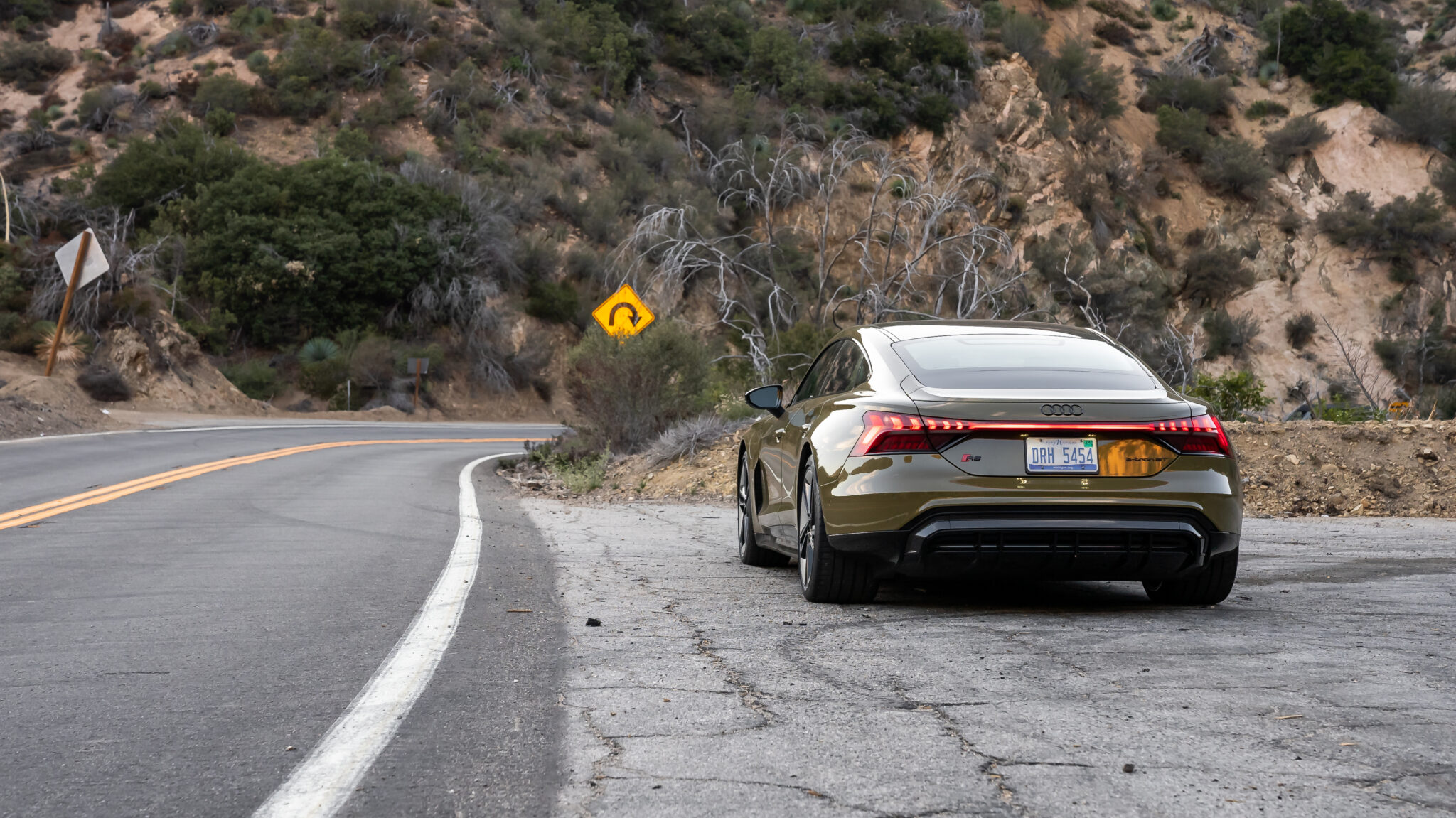
Pricing for the 2023 Audi RS e-tron GT starts at $145,395, including a $1,495 destination fee. However, thanks to optional extras such as a $7,100 ceramic brake package, a $6,450 carbon performance package, and a $5,350 full leather interior package, my tester’s as-tested price is $164,890.
For context, a similarly optioned Lucid Air Grand Touring Performance costs $163,500, while a comparable Mercedes-AMG EQS comes in at $164,140. Thanks to recent discounts, however, the Tesla Model S Plaid, even when optioned up to $109,880, severely undercuts every other vehicle in the segment.
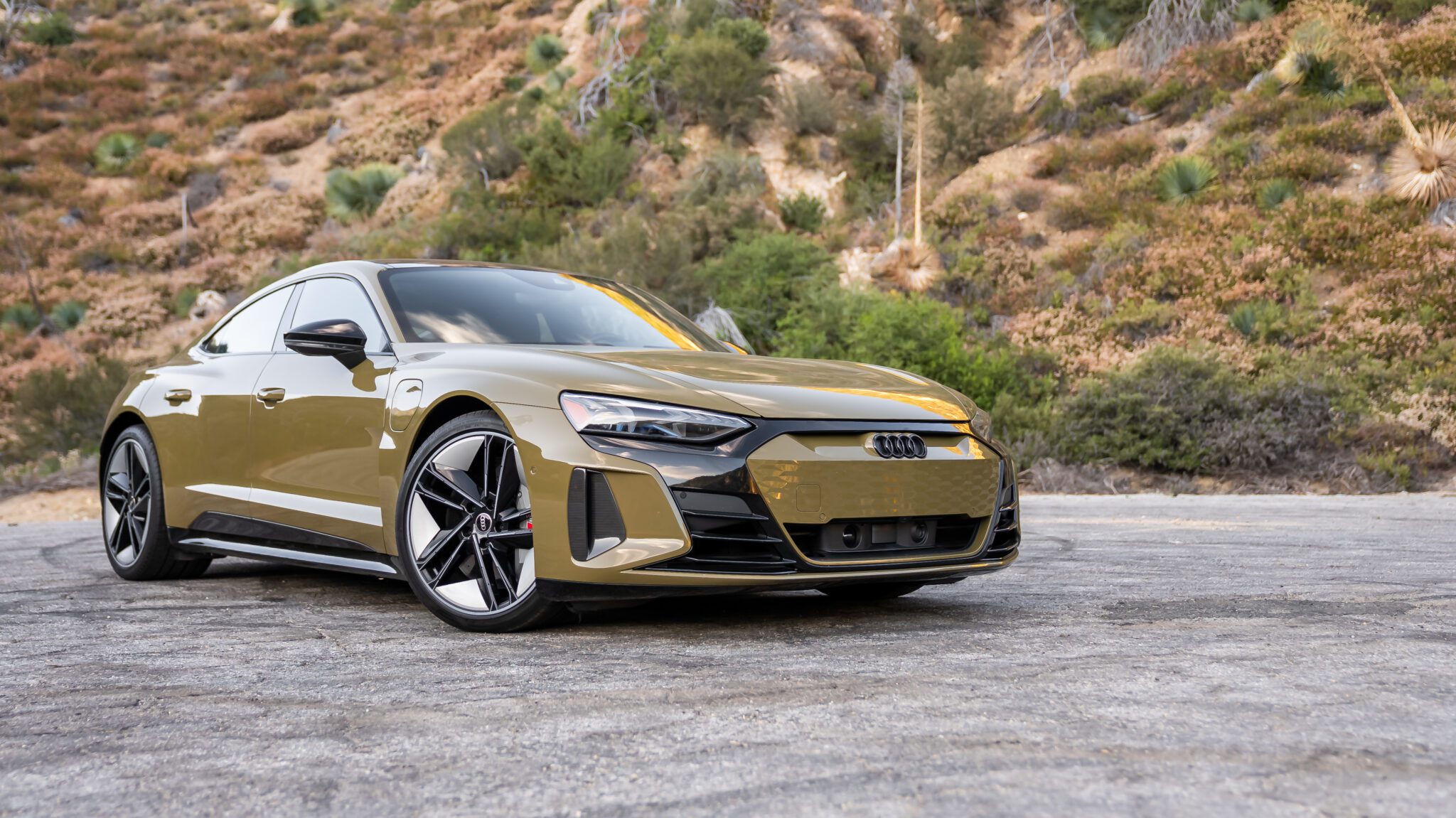
As such, the RS e-tron GT’s pricing aligns with that of most competitors, but three years after its unveiling, is it the six-figure high-powered EV to have? As you may have guessed by this point, the answer depends on the buyer. For the stat-focused EV enthusiast for whom only the quickest 0-60 time and the greatest range will do, the RS can’t match up to the Lucid’s range and speed or the Model S Plaid’s tremendous value.
Instead, the RS will appeal to an entirely different kind of enthusiast who values an exciting driving experience over the best on-paper stats. The RS may not have the longest range nor the quickest acceleration in the segment, but it nails what cars in this segment should do by delivering thrills behind the wheel. Cars at this price point should be emotional purchases, not practical ones, and with its killer looks and exciting driving experience, the e-tron GT still makes a strong case for itself. After all, there’s more to a car than just the stats.

